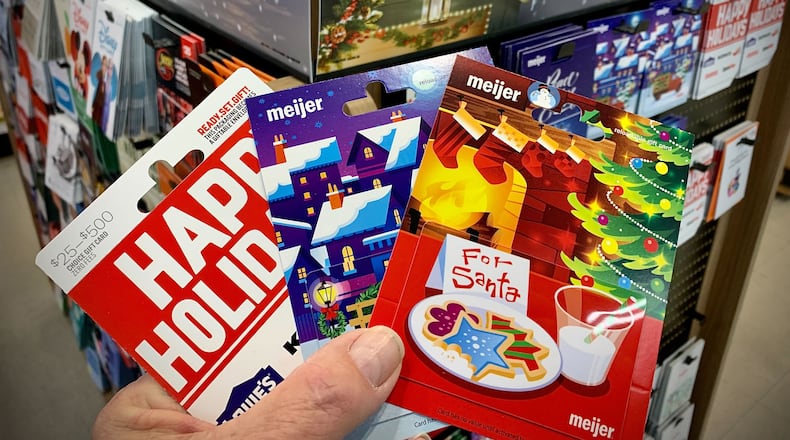Shoppers said they planned to buy an average of three or four cards this year with an average of nearly $50 per card. The number of cards given this year was expected to increase in an attempt for gift givers to deal with shortages, shipping delays and supply chain challenges.
But gift cards are an area rife with opportunity for people to lose their money, according to the Better Business Bureau. John North, president and CEO of BBB of Dayton & Miami Valley, advises anyone who has received one to immediately use the entire balance of the card.
“The most common way that a gift card doesn’t get used is by people who forget or lose their gift cards,” North said. “There are millions of dollars that go unused.”
More than half of U.S. adults have more than $15.3 billion in unused gift cards store credit and vouchers, according to a Bankrate.com poll released earlier this year. That amounts to an average of $116 per person in gift cards.
Using gift cards sooner rather than later also is a good idea because of the risk of a retail shop or restaurant permanently shutting down with no reimbursement offered for unused gift card balances, North said.
Gift card funds also can be lost when shoppers inadvertently leave it out where others may be able to see it, forgetting it at a store or using only part of it and then forgetting about the remainder or throwing it away, he said.
BBB also recommends researching the terms and conditions of the gift card received, as not all retailers have the same policies. It warns of websites that offer to check a gift card balance when, in fact, some websites are draining the money off your card after obtaining your card’s ID number and PIN or security code
Another tip to avoiding such hassles is to register a gift card, if the retailer allows, according to the BBB. That way, any theft can be reported sooner and potentially save money stored on the card. The BBB also advises to change the PIN on the card.
If a card is lost or stolen, one should treat it as if cash has been stolen and report it to the issuing retailer or restaurant as soon as possible. Most issuers have toll-free telephone numbers to report a lost or stolen card , most of which may be found on the card or online.
In addition, scammers do their best to obtain gift card numbers, North said, sometimes scratching off the back of a gift card in a store and waiting to strike until is activated and loaded with funds. Doing so, they immediately transfer the funds into their own account or entirely deplete a card of the entire amount placed onto it, all of that happening days and often weeks before the card ever ends up in someone’s hands as a gift.
If they can’t get them in the aisles where a gift card is located, scammers try to swindle an unsuspecting citizen of them by pretending to need payment for something and saying the matter is urgent, North said.
“Scam artists say that you are in arrears on some sort of payment or owe some sort of money and they will ask you to put that on a gift card,” he said. “Gift cards are an easy form of cash for scam artists and not very traceable.”
But according to the Federal Trade Commission, anyone that demands payment by gift card is always a scammer and that “once a scammer has a gift card number and its PIN, they have your money.”
It’s nearly impossible to get the money back because gift cards do not have the same protections as credit or debit cards, according to the BBB.
Reported losses involving payments with gift cards nearly tripled between 2017 and 2020, according to the BBB. The median loss was $700 in 2020. Losses increased from nearly $1.2 million in 2017 to nearly $1.8 million in 2018, nearly $2.1 million in 2019 and nearly $3 million in 2020.
Spending this holiday season is expected to total $28.1 billion, the highest since $29.9 billion in 2018.
About the Author

